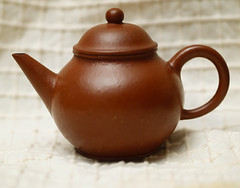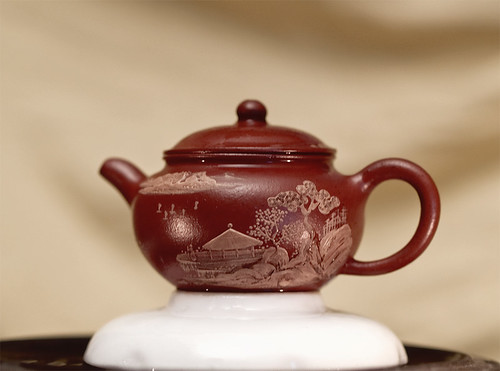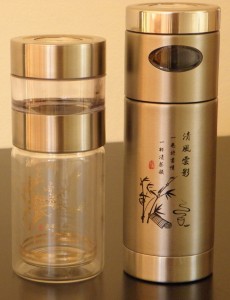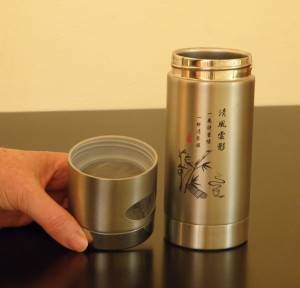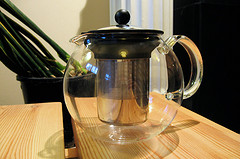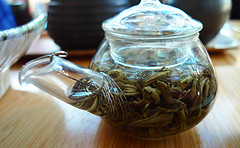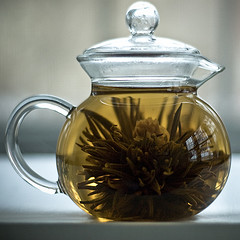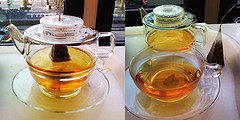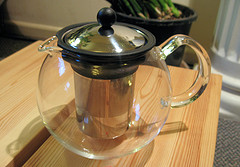
History of Lin Ceramics
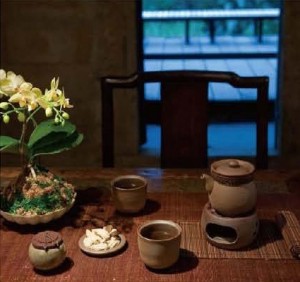 Starting out small, at the advent of the 1980’s tea culture revival in Taiwan, Lin’s Ceramics was established in 1983. What made their brand of tea ware stand out from many others was their belief that in order to establish high quality tea ware it was necessary to utilize their cultural knowledge and understanding of all aspects of the tea culture, in designing simple daily utensils with specific types of tea in mind. The result; an absolutely breathtaking selection of some of the finest and highest quality Chinese tea ware available.
Starting out small, at the advent of the 1980’s tea culture revival in Taiwan, Lin’s Ceramics was established in 1983. What made their brand of tea ware stand out from many others was their belief that in order to establish high quality tea ware it was necessary to utilize their cultural knowledge and understanding of all aspects of the tea culture, in designing simple daily utensils with specific types of tea in mind. The result; an absolutely breathtaking selection of some of the finest and highest quality Chinese tea ware available.
From their initial single pot design, they branched out into complete tea sets and a comprehensive range of tea accessories. Early Lin Ceramics, pioneered by founder, Lin Guorong are clearly differentiated from tea ware made in the early 2000’s, by the signatures impressed into each piece of tea ware. By the mid 2000’s, it is estimated that over 80% of tea houses in Taiwan were using Lin tea ware. Today, they have stores throughout mainland China and Taiwan.
What has made Lin Ceramics so popular? Creative and artistic design, practicality, a deep knowledge of tea and best brewing practices and a desire to make tea ware that can be easily integrated into everyday lives, both at home and at the office. They suggest using different types of tea ware for preparing and drinking different types of teas – this, along with the extremely creative, beautiful design, has made their tea ware some of the most sought after, high-end products of this type currently available.
Quality of Lin Ceramic Tea Ware
Aside from the professional design, the actual quality of this tea ware is definitely a cut above much of the other Chinese tea sets and tea ware currently available. All of the clay and other materials used in making the tea ware are of very high grade. The clay is mixed carefully and each piece is individually shaped by one of the many talented craftspeople in their employ. While much of the cheaper teaware available on the market today is mass-produced, each piece made by Lin Ceramics can be thought of as a piece of art more than merely a tea cup. Once the piece is shaped, natural mineral or plant glazes are applied. Great care is then taken with the next stage – firing the products, sometimes up to three times in order to achieve the perfect result. No harmful or unnatural substances are used at any stage of the production. The result? Artistic, unique, hand-crafted tea ware.
Different Teas Can Be Better Enjoyed By Matching Tea to Tea Pot
It is well known that different teas, ranging from green to oolong to black, are best brewed at different temperatures. Non or lightly fermented teas are best when brewed at lower temperatures – these teas include green teas and high mountain oolongs . Partial or semi-fermented teas, such as yellow oolongs, are best brewed at medium temperatures. The more heavy or fully fermented teas, including black tea, or other aged or highly fermented teas need high temperatures to bring out their best qualities. Keeping this in mind, there are three categories of Lin Ceramics with each type matched to different teas.
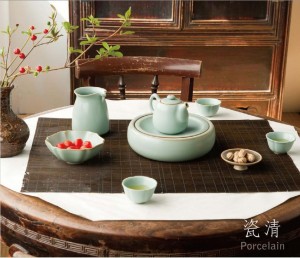 Porcelain is high in heat conductivity, meaning that the pot itself loses heat quite quickly. This is why their porcelain range of products is best suited for teas that are best steeped at lower temperatures. Teas you could consider using porcelain tea ware for include green teas, scented green teas and the famous Taiwanese high mountain oolongs.
Porcelain is high in heat conductivity, meaning that the pot itself loses heat quite quickly. This is why their porcelain range of products is best suited for teas that are best steeped at lower temperatures. Teas you could consider using porcelain tea ware for include green teas, scented green teas and the famous Taiwanese high mountain oolongs.
Their Pottery Series best serves the yellow oolongs and other partly or semi-fermented teas that are best brewed at a slightly higher temperature than green tea. They are great for larger leafed oolong teas as the teapots themselves have plenty of room for the tea leaves to expand.
The porous Purion series of teapots have very low heat conductivity, keeping the water at a higher temperature for longer periods of time. This is needed in order to bring out the rich flavours of some of the famous black teas, roasted teas, heavily fermented or aged oolongs and of course Pu-erh tea.
What Is Available
Each of the different ranges; the Purion series, Pottery series and Porcelain series have a complete selection of Chinese teapots, tea cups and serving pots. The Pottery series has a wide selection of different items that are available in up to five different natural colours. There are different styles and sizes of cups and pots available. The Purion series includes a fantastic selection of tea stands and incense holders, as well as the regular tea pots, cups, tea jars, water pitchers and serving pots. The Porcelain series has a collection series closely resembling the style of some of the more renowned Song Dynasty craftsmanship.
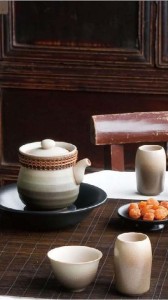 There is also a complete range of kettles (and stands) available. The kettles are very versatile in that they can be heated using electricity, charcoal, gas or alcohol stoves. For those wanting a genuine, authentic look, a traditional charcoal set may be more to your liking. A wide range of bamboo trays are available in different shapes and sizes, as well as bamboo traveling sets comprised of a bamboo carry case complete with carry bag. Finally, there is a complete range of gift sets – an ideal Christmas or birthday present for any tea lover.
There is also a complete range of kettles (and stands) available. The kettles are very versatile in that they can be heated using electricity, charcoal, gas or alcohol stoves. For those wanting a genuine, authentic look, a traditional charcoal set may be more to your liking. A wide range of bamboo trays are available in different shapes and sizes, as well as bamboo traveling sets comprised of a bamboo carry case complete with carry bag. Finally, there is a complete range of gift sets – an ideal Christmas or birthday present for any tea lover.
While this is nowhere near a comprehensive list of what Lin Ceramics has to offer (there are a lot of other accessories that can be ordered) hopefully it provides you with some idea of the variety offered by Lin Ceramic Studios. Keep an eye out – I will shortly be offering some of these high end Chinese tea sets for sale on my site.
